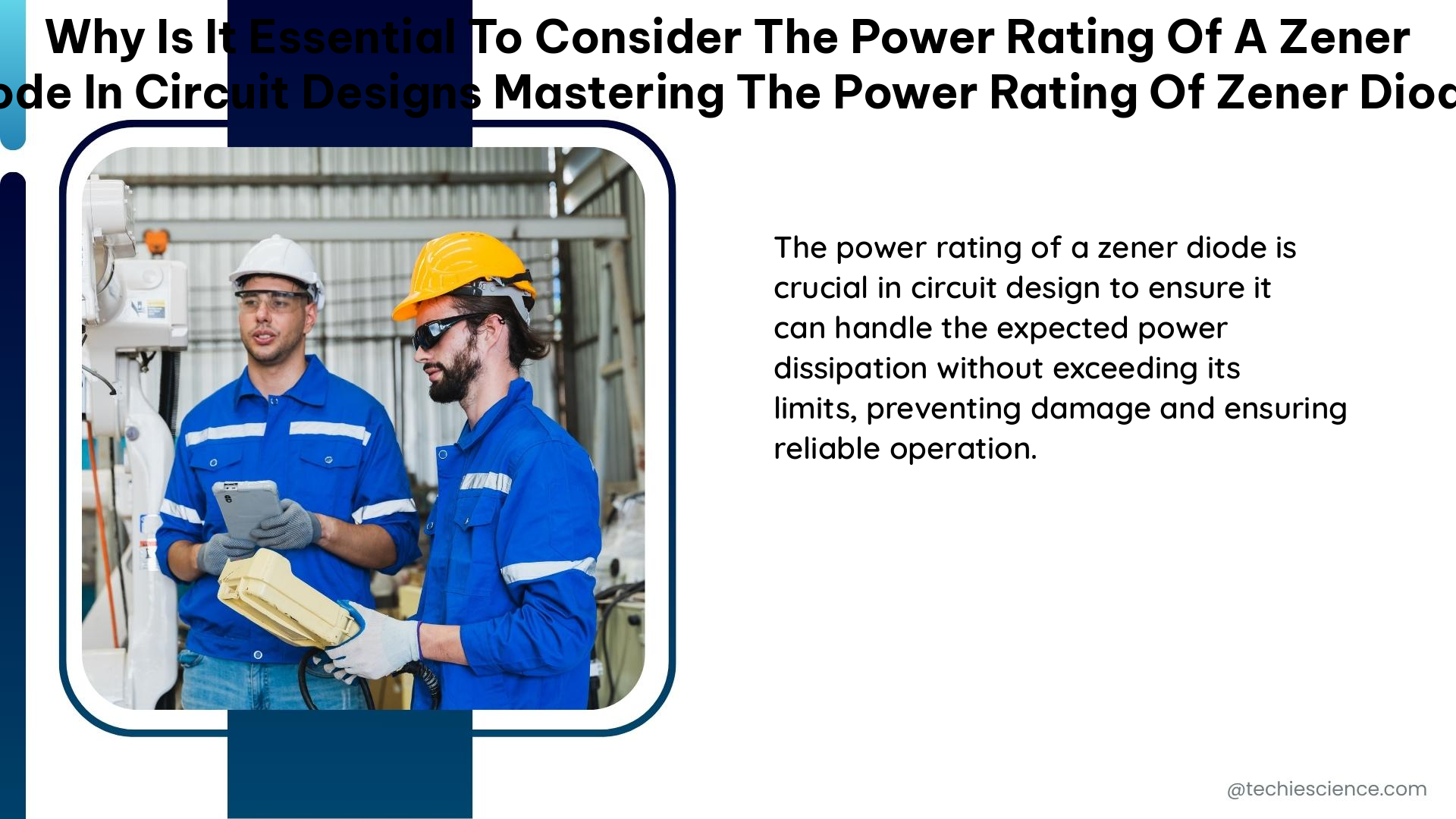When designing circuits with zener diodes, it is crucial to consider the power rating of the zener diode to ensure the safe and efficient operation of the circuit. The power rating of a zener diode is the maximum power that the diode can safely dissipate without damage, and it is an essential parameter to consider when selecting a zener diode for a particular application.
Understanding Zener Diode Operation and Power Dissipation
A zener diode is a type of diode that is designed to operate in the breakdown region, where it exhibits a constant voltage drop regardless of the current flowing through it. This property makes zener diodes useful for voltage regulation and reference applications.
When a zener diode is operated in the breakdown region, it will dissipate power in the form of heat. The amount of power dissipated is given by the formula P = IV, where P is the power, I is the current flowing through the diode, and V is the voltage across the diode. If the power dissipated exceeds the rated power of the diode, the diode may overheat and fail.
Calculating the Maximum Current and Power Dissipation

To avoid exceeding the power rating of the zener diode, it is essential to ensure that the power dissipated in the diode does not exceed its rated power. This can be achieved by selecting a diode with a sufficiently high power rating for the application.
The maximum current that can flow through a zener diode without exceeding its power rating can be calculated using the formula:
IZM = PZM/VZ
Where:
– IZM is the maximum current that can flow through the diode
– PZM is the power rating of the diode
– VZ is the voltage rating of the diode
For example, consider a circuit that uses a zener diode to regulate a 5V supply. The diode has a voltage rating of 5.1V and a power rating of 1W. Using the formula above, we can calculate the maximum current that can flow through the diode:
IZM = 1W/5.1V = 196 mA
Therefore, the maximum current that can flow through the diode without exceeding its power rating is 196 mA. If the current exceeds this value, the diode may overheat and fail.
In addition to the zener diode power rating, it is also essential to consider the power rating of any resistors used in the circuit. The power dissipated in the resistor can be calculated using the formula:
PR = I2R
Where:
– PR is the power dissipated in the resistor
– I is the current flowing through the resistor
– R is the resistance of the resistor
For example, consider the simple voltage regulator circuit shown in the figure. The resistor is calculated using the formula:
R = (VS – VZ) / Iz
Where:
– VS is the source voltage
– VZ is the zener voltage
– Iz is the zener current
Plugging in the values, we get:
R = (12V – 5.1V) / 196mA = 3950 ohms
To calculate the power dissipated in the resistor, we can use the formula PR = I2R, where I is the current flowing through the resistor and R is the resistance.
I = (VS – VZ) / (R + (VZ / Iz))
I = (12V – 5.1V) / (3950 ohms + (5.1V / 196mA)) = 15.5mA
PR = I2R = (15.5mA)2 x 3950 ohms = 94.6mW
Therefore, the resistor should be rated for at least 94.6mW to ensure safe operation.
Key Considerations for Zener Diode Power Rating
When designing circuits with zener diodes, there are several key considerations to keep in mind:
- Maximum Current: The maximum current that can flow through the zener diode without exceeding its power rating is given by the formula IZM = PZM/VZ.
- Power Dissipation: The power dissipated in the zener diode is given by the formula P = IV, where P is the power, I is the current flowing through the diode, and V is the voltage across the diode.
- Ambient Temperature: The power rating of the zener diode may be affected by the ambient temperature, so it’s important to consider the operating environment when selecting a diode.
- Resistor Power Rating: The power rating of any resistors used in the circuit should also be considered, as the power dissipated in the resistor can be calculated using the formula PR = I2R.
By carefully considering these factors and selecting zener diodes and resistors with appropriate power ratings, you can ensure the safe and efficient operation of your circuit designs.
Conclusion
In summary, when designing circuits with zener diodes, it is essential to consider the power rating of the zener diode to ensure the safe and efficient operation of the circuit. By understanding the basic operation of zener diodes, calculating the maximum current and power dissipation, and considering the power ratings of other components, you can ensure that your circuit designs are reliable and long-lasting.
References:
– Minimum power rating of zener diode – Electronics Stack Exchange
– Zener regulator circuit, and power ratings. – EEVblog
– Zener Diode as Voltage Regulator Tutorial – Electronics Tutorials
– Zener Power Rating in circuit | All About Circuits
– Zener Diode Power Rating Calculation – EEPower

The lambdageeks.com Core SME Team is a group of experienced subject matter experts from diverse scientific and technical fields including Physics, Chemistry, Technology,Electronics & Electrical Engineering, Automotive, Mechanical Engineering. Our team collaborates to create high-quality, well-researched articles on a wide range of science and technology topics for the lambdageeks.com website.
All Our Senior SME are having more than 7 Years of experience in the respective fields . They are either Working Industry Professionals or assocaited With different Universities. Refer Our Authors Page to get to know About our Core SMEs.